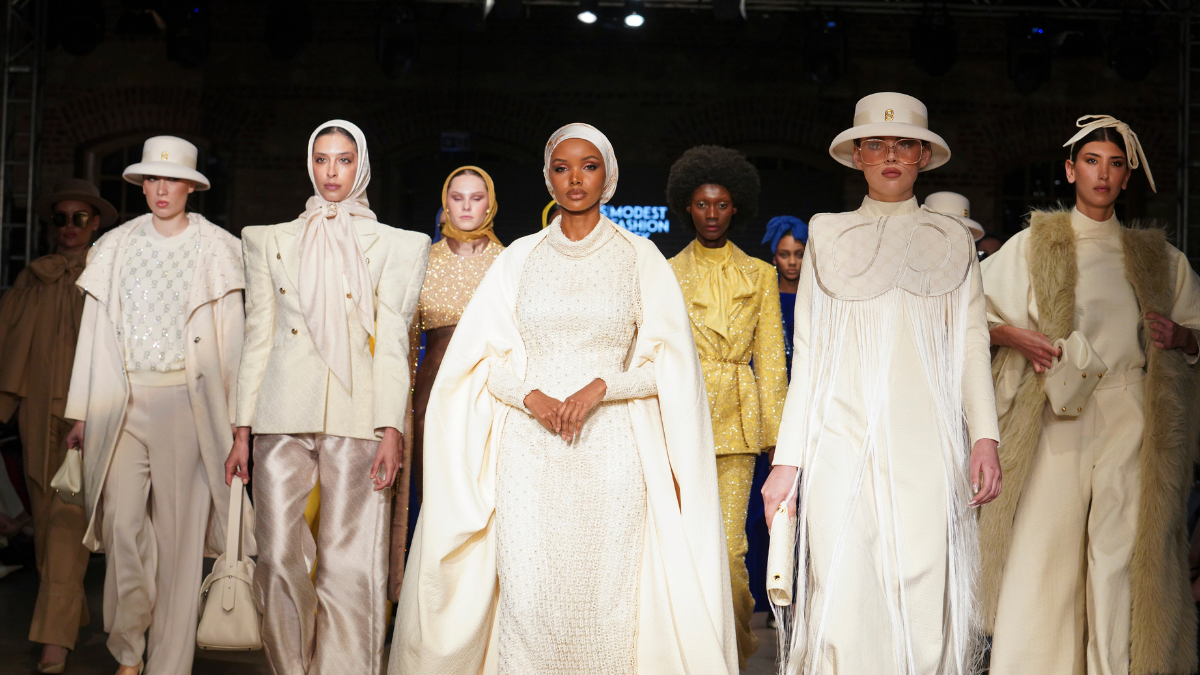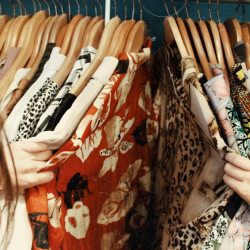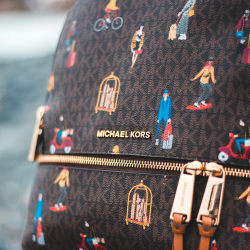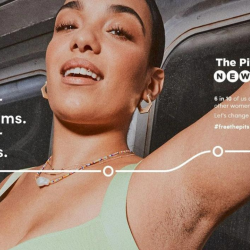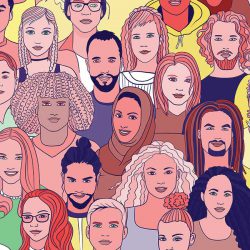Modest fashion is characterised by loose clothing that conceals the shape of a person’s body and covers most of their skin. Often, those who dress modestly do so for religious reasons (e.g., Muslim women) and this leads to the common misconception that ‘modest fashion’ is synonymous with ‘Islamic fashion’. In reality, the market for modest fashion encompasses not only Muslim women but also body-conscious individuals, people with skin conditions and those from other religions and cultures.
Speaking to MediaCat, Professor Reina Lewis, London College of Fashion, UAL explained: ‘It is true that globally the biggest consumer segment for modest fashion is Muslim women, but women from other religious cultures also want modest clothing and many women who are secular or not religious also want ensembles that allow them to choose which parts of their body are on display.’
Focusing on Muslim consumers alone, the 2023/24 State of the Global Islamic Economy Report reveals that spending on modest clothing and footwear increased by 4.8% between 2022 and 2023; moreover, it is expected to reach $428 billion (over £327 billion) by 2027. If we were to include the spending of other modest-dressing consumers, these projections would increase even further.
High demand but inadequate supply
If there is a demand for it, one would expect that there is also an adequate and proportionate supply. Yet, the supply is significantly lower and often unsatisfactory. Women — particularly Muslim women in Western countries — are often met with a lack of options when searching for modest clothing.
Taking a case in point, a study into Muslim women’s opinions on UK high street shops in 2019 found that 86% felt ‘ignored’ by high street fashion brands. When brands do offer modest collections, the items are often perceived as basic, plain, or even boring. In other words, they make dressing modestly and dressing stylishly mutually exclusive. Another significant issue is the lack of understanding of what modest fashion actually is. According to the 2019 study mentioned above, 75% of Muslim women put products back when shopping because they do not meet their requirements. What is worse, 63% feel UK high street brands ‘appropriate cultural dress’ instead of catering to their actual needs.
This lack of supply and understanding led Rabia Zargarpur — also known as ‘the first lady of modest fashion’ — to launch her own fashion label (Rabia Z.) in 2001. The Emirati fashion designer previously revealed that she launched Rabia Z. as a way of empowering herself when she struggled to find modest clothes in the US.
‘Modest fashion empowers women by allowing them to express their personal style while adhering to their cultural or religious beliefs,’ Zargarpur told MediaCat. ‘It’s about choice and control over how one presents oneself to the world. When women feel confident and comfortable in their clothing, it radiates outward, fostering a sense of empowerment.’
While Zargarpur launched her brand in the early 2000s, Muslim women today are still struggling to find items that meet their needs. As a result, we are seeing more and more women take matters into their own hands. Key Modesty, a brand that recently opened a physical store in London, was also born out of the need to fill a gap in the market. On their website, they share that their journey began ‘out of a personal need’ and frustration ‘with the lack of stylish yet modest options’.
The founder, Ayah, shares her story on TikTok and Instagram, where she also showcases her store, markets her products, and creates humorous content to attract viewers. The latter is a marketing trend that we are increasingly seeing brands embrace.
Bringing together modest fashion designers
Over the last decade, there has been a notable increase in the number of modest fashion designers. Thanks to the CEO of ThinkFashion, Ozlem Sahin Ertas, these designers have been able to come together to showcase their work and celebrate modesty at Modest Fashion Weeks since 2015.
Ertas spoke to MediaCat, revealing what inspired her to launch Modest Fashion Weeks: ‘The Modest Fashion Weeks journey started from a need. The need for a more inclusive fashion perspective that gathers different body types, different lifestyle dynamics and cultural backgrounds. I dreamed of a fashion space which is more welcoming, respecting the diversity of fashion and, of course, highlighting the modest talents who had no voice for a long time despite the power of the modest market.’
Since its inception, Modest Fashion Weeks has grown and travelled from Istanbul to London, Dubai, Jakarta, Riyadh, and Amsterdam. Ertas spoke about the success of the events, sharing that they are ‘empowering thousands of modest fashion lovers from five continents’. Further commenting on how modest clothing empowers women, she explained that it gives them the freedom ‘to choose comfortable and stylish at the same time’.
Western brands are slowly waking up
We have seen several Western brands start catering to modest dressers in recent years. Considering that by 2050, Muslims are expected to make up 10% of the overall population in Europe, the number of women looking for modest fashion will only increase. In other words, Western brands can no longer afford to ignore the needs of this demographic.
Some of the Western brands getting it right are Net-a-Porter, ASOS, boohoo, John Lewis, and Next — all of which have modest lines or Ramadan and Eid edits. Luxury houses such as Dolce and Gabbana have also stepped up to meet the demand of Muslim women, having launched their first hijab and abaya collection in 2016.
‘Western or global brands have been waking up to the size of the modest fashion market gradually over the last decade. There is clearly a business case for reaching out to these groups of consumers — especially to the large youthful global Muslim demographic,’ Professor Lewis said.
While these brands are certainly moving in the right direction, it is important to note that the diversity of styles is still rather narrow. Professor Lewis explained how brands can better cater to modest dressers, noting that women who share a commitment to modest presentation still have varied ‘aesthetic sensibilities’ that are further ‘segmented also by age, occupation, location, and income.’
Understanding your customers is non-negotiable
In 2019, Banana Republic launched a line of hijabs that resulted in controversy. The introduction of this collection was applauded by some, but many criticised the American retailer for advertising hijabs on a model wearing a short-sleeved top and a dress with a slit. The choice to portray the hijabs in this way told Muslim women that the brand did not understand them and what modest fashion means.
‘I suggest Western brands understand the modest fashion industry deeply and partner with all stakeholders. Otherwise, it seems awkward and non-reliable. The modest fashion consumers are smart, and they can easily distinguish the sincerity or the effort of getting more market share,’ Ertas explained.
Zargarpur similarly offered her advice for Western brands, suggesting that they conduct thorough market research, collaborate with modest fashion experts or influencers, offer a diverse range of sizes and styles, and use high-quality, comfortable fabrics.
Ultimately, the brands that are overlooking modest-dressing customers — or viewing inclusivity as a tick-box exercise — are missing out on an immense and significant market. Independent designers and events such as Modest Fashion Weeks demonstrate that women all over the world are in search of inclusive options that empower them to express their unique styles.
Featured image: Istanbul Modest Fashion Week 2024 / IMFW24 Photography Team




















